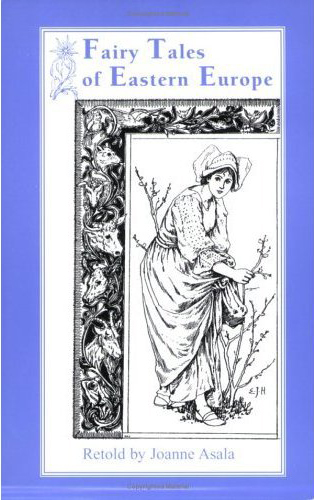

A Polish Christmas Eve
by Rev. Dr. Czeslaw Krysa, S.T.L., Softcover; 300 pp., 8.25 x 10.75"
Black and white illustrations by Alice Wadowski Bak
Music (lead line and chords) with Polish lyrics with English translations
Item 2-648
$26.95
Even of you are not Polish, the celebration of the Christmas season — and especially of Christmas Eve — in this book is a treat. Learn to make folded paper stars, eggnog, and traditional Polish dishes. Learn all about the Wigilia, or Christmas Eve dinner. Read stories and sing carols. Lots of photographs from Poland and Polish America homes.
Four weeks of preparation, called Advent, precede the Christmas season in Poland. This is a time for recollection and for taking stock of one’s direction in life.
The Christmas season begins on December 25th and lasts until February 2nd: forty days set aside to celebrate Christ’s birth. Nativity scenes and Christmas trees grace churches and homes throughout this joyful season.
The high point of the entire year happens on Christmas Eve when families serve an ancient ritual meal, called the Vigil Supper: and intimate evening celebration, Poland’s joyous treasure, a true living heirloom.
The meal begins after a day of fasting, when the youngest child in the family sights the first star in the sky. At the family table under a white tablecloth lies a thin layer of hay as a reminder that Christ was born in a stable. Tradition holds that an even number of places are set at the table, with one reserved for Christ, or any stranger who may be far away from home on this important night.
Before eating, all present share the Christmas wafer, a symbol of familial unity. All hard feelings from the past year are forgotten, all transgessions are forgiven and good wishes for the coming year are exchanged.
The menu is always meatless in the spirit of preparation forthe fullness of Christmas Day.
The customs of the Christmas Eve Vigil Supper anticipate the most joyful family season of the year. The Vigil Supper open the Twelve Days of Christmas (December 25th to January 6th), initiating a festive season lasting in Poland, until the Presentation of the Lord among them, recalling the birth of a Child in a barn to parents of little means.
In the words of a Polish carol, Christ came to this earth "In the night’s stillness". A warm embrace welcomes each family member home on Christmas Eve to celebrate in time-honored ritual and tradition of the Vigil Supper, which stills the heart and comforts the anxious spirit. Jesus literally comes home to celebrate the festival of our salvation at the family table.
This book is a quick and easy reference, step-by-step guide and international collection of folklore, stories, recipes, carols and decorations with never before published photos and black and white illustrations, glossary, pronunciation guide, and a regional map of Poland.
Polish Holidays: An Introduction
by Peter Zaremba. Illustrated by Jason BartonSoft cover. 6x9. 20 pp.
English Language Version.
$14.95
This book is shipped through the U.S. Postal Office using Media Mail service. Typically delivery times are between 1 and 2 weeks. Please be advised, certain destinations may take longer.
Fairy Tales of Eastern Europe
Written by Joanne Asala2-636
Was $12.95 now $6.95
Dimensions: 6 x 9 inches
157 pp.
Many of the plots, motifs, and structural elements in these Slavic tales are found in other stories told around the world.
In “The Three Golden Hairs,” for example, we see the Soudiche, the eastern European Equivalent of the Greek Fate Sisters. A peasant child is ordered killed to evade an ominous prophecy but survives to fulfill the dire predictions, much like Oedipus in the play by Sophocles. The endangered child is found in a basket floating down the river, and eventually becomes part of the king’s household as does the biblical Moses. In Shakespeare’s Hamlet, a message to kill the hero is secretly changed to save the bearer.
An apple tree in the Slavic tale, “The Fruit of Everlasting Youth,” evokes the Tree of Life in the Garden of Eden. The ages of man described by the Fate Sisters are quite similar to the ancient “Riddle of the Sphinx.” A snake impedes the function of the Tree of Everlasting Youth, again reminiscent of the Garden of Eden.
Perhaps the reader will recognize Cinderella in the character of Marouckla, or Rumpelstiltskin in the story of Kinkach Martinko. So enjoy this sparkling collection of richly imaginative folktales that stretch back in time and space to a tantalizingly remote past.
— Dr. Harry Oster, folklorist
Polish Herbs, Flowers, and Folk Medicine
by Sophie Hodorowicz Knab, revised and updated edition
Item 1-643
Paperback
$24.95
Polish Herbs, Flowers. and Folk Medicine captures the unique history and role of plant life once essential to the people of Poland. It takes the reader on a historical tour of herbs and flowers used throughout the centuries, explores the growth of medicine and pharmacies, wanders through monastery, castle, and cottage gardens. It provides information on the use of over one-hundred-seventy plants used in healing as well as in the customs, traditions throughout the year, and within the life cycle.
There are legends, cautionary tales, love potions, and a chapter devoted to wedding plants and herbs. There are home remedies for everything that ailed the people of Poland from arthritis, to relaxants and rejuvenators, as well as heartache, and heartburn. Gleaned from old Polish herbals, there are balms for the numerous ailments of the human condition. It also includes homemade herbal vinegars, soups, syrups, and liqueurs made from herbs including elderberry syrup, homemade Benedictine, and a healing vodka drink from Gdansk.
This revised and updated edition of Polish Herbs, Flowers, and Folk Medicine remains is filled with additional information and research, new illustrations, and color photographs. All plants are listed alphabetically according to their English common name, followed Latin botanical name, and common Polish name. It is an indispensable book filled with history, how-to and inspiration history buffs, gardeners, and for anyone who is interested in furthering their knowledge of the life of their Polish ancestors.

Spirit of Place: The Roadside Shrines of Poland
by Sophie Hodorowicz Knab
Item 1-676
Hardcover
$24.95
It is said that every country has its own genus loci or “spirit of place.” Poland’s distinct character can be found in the tens of thousands of roadside chapels, crosses and shrines that dot both its cities and countryside. A thousand years of Christianity, and the Polish Catholic tradition in particular, have left their mark on the country’s landscape. It is impossible not to notice the religious statues and little chapels that seem to be everywhere. Enter a courtyard in Warsaw or Kraków and discover a statue of the Blessed Virgin Mary mounted on a pedestal with fresh flowers at her feet. Drive through a small town, and you’ll spy a niche under the eaves of a home containing a figure of the Sacred Heart of Jesus or a little wooden box on a tree holding a small image of Our Lady of Częstochowa. All of them seem to blend harmoniously with the environment and beautify it. What are these objects? What do they mean? How did they come to be in this particular place? Why are they important?
Acclaimed Polish-American author Sophie Hodorowicz Knab explores the origins and purposes of these roadside shrines, examining the different types of shrines and the significance of the various religious figures represented in them to the people of Poland. Additional chapters are devoted to the artists and sculptors who created the shrines, the role these local shrines played in the annual holidays, customs and traditions of the community, and their role in everyday life as well as death. Color photographs throughout depict the artistry and local setting of these shrines.



